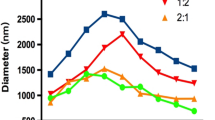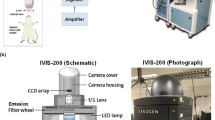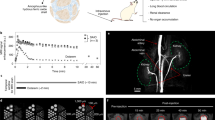Abstract
Myocardial contrast echocardiography utilizes intravenously injected gas-filled microspheres as acoustically active red blood cell tracers. During ultrasound imaging, unimpeded microsphere transit through the intramyocardial microcirculation causes transient myocardial opacification, which can be mapped and quantified as myocardial perfusion. Ultrasound molecular imaging utilizes similar acoustically active microspheres, which are modified to bear a receptor-specific ligand on the surface, conferring microsphere binding to a disease-specific endothelial epitope. Because the microspheres adhere to the endothelium, ultrasound imaging reveals a persistent, rather than transient, contrast effect, indicating the presence and location of the molecule of interest in real time. Molecular contrast echocardiography has been developed to detect upregulated leukocyte adhesion molecules during microvascular inflammation, such as occurs in cardiac transplant rejection and ischemia–reperfusion. Principles of microsphere targeting and ultrasound imaging of microvascular epitopes have been extended to larger vessels to image molecular markers of atherosclerosis. This Article summarizes the current status of cardiovascular ultrasound molecular imaging. Experimental proofs of concept will be outlined and the clinical extension of these concepts to the molecular imaging of cardiovascular disease using clinical ultrasound technology will be discussed.
Key Points
-
Ultrasound molecular imaging is based on the use of gas-filled microspheres engineered to bind to function-specific endothelial markers of disease via specific ligand-receptor interactions and that can be detected using clinical ultrasound scanning
-
Targeted ultrasound imaging of leukocyte adhesion molecules can be used clinically to noninvasively identify myocardial ischemic memory, angiogenesis, and acute heart transplant rejection
-
Catheter-based intravascular ultrasound imaging of adhesion molecules might permit identification of atherosclerosis-prone endothelium before luminal stenosis, facilitating early-stage diagnosis, and hence preventative treatment
-
Optimization of microbubble and transducer design holds promise for the clinical translation of ultrasound molecular imaging to human populations in the foreseeable future
This is a preview of subscription content, access via your institution
Access options
Subscribe to this journal
Receive 12 print issues and online access
$209.00 per year
only $17.42 per issue
Buy this article
- Purchase on Springer Link
- Instant access to full article PDF
Prices may be subject to local taxes which are calculated during checkout



Similar content being viewed by others
References
Skyba DM et al. (1996) Hemodynamic characteristics, myocardial kinetics and microvascular rheology of FS-069, a second-generation echocardiographic contrast agent capable of producing myocardial opacification from a venous injection. J Am Coll Cardiol 28: 1292–1300
Lindner JR et al. (2002) Microvascular rheology of Definity microbubbles after intra-arterial and intravenous administration. J Am Soc Echocardiogr 15: 396–403
Demos SM et al. (1999) In vivo targeting of acoustically reflective liposomes for intravascular and transvascular ultrasonic enhancement. J Am Coll Cardiol 33: 867–875
Lanza GM et al. (2000) In vivo molecular imaging of stretch-induced tissue factor in carotid arteries with ligand-targeted nanoparticles. J Am Soc Echocardiogr 13: 608–614
Straub JA et al. (2007) AI-700 pharmacokinetics, tissue distribution and exhaled elimination kinetics in rats. Int J Pharm 328: 35–41
Villanueva FS et al. (2001) Detection of coronary artery stenosis with power Doppler imaging. Circulation 103: 2624–2630
Villanueva FS et al. (1998) Microbubbles targeted to intercellular adhesion molecule-1 bind to activated coronary artery endothelial cells. Circulation 98: 1–5
Hamilton AJ et al. (2004) Intravascular ultrasound molecular imaging of atheroma components in vivo. J Am Coll Cardiol 43: 453–460
Marsh JN et al. (2002) Improvements in the ultrasonic contrast of targeted perfluorocarbon nanoparticles using an acoustic transmission line model. IEEE Trans Ultrason Ferroelectr Freq Control 49: 29–38
de Jong N et al. (2002) Basic acoustic properties of microbubbles. Echocardiography 19: 229–240
Becher H and Burns PN (2000) Handbook of Contrast Echocardiography. New York: Springer-Verlag
Jayaweera AR et al. (1994) In vivo myocardial kinetics of air-filled albumin microbubbles during myocardial contrast echocardiography. Comparison with radiolabeled red blood cells. Circ Res 74: 1157–1165
Hundley WG et al. (1998) Administration of an intravenous perfluorocarbon contrast agent improves echocardiographic determination of left ventricular volumes and ejection fraction: comparison with cine magnetic resonance imaging. J Am Coll Cardiol 32: 1426–1432
Wei K et al. (2005) Detection of coronary stenoses at rest with myocardial contrast echocardiography. Circulation 112: 1154–1160
Elhendy A et al. (2004) Comparative accuracy of real-time myocardial contrast perfusion imaging and wall motion analysis during dobutamine stress echocardiography for the diagnosis of coronary artery disease. J Am Coll Cardiol 44: 2185–2191
Ragosta M et al. (1994) Microvascular integrity indicates myocellular viability in patients with recent myocardial infarction. New insights using myocardial contrast echocardiography. Circulation 89: 2562–2569
Dwivedi G et al. (2007) Prognostic value of myocardial viability detected by myocardial contrast echocardiography early after acute myocardial infarction. J Am Coll Cardiol 50: 327–334
Wei K et al. (2003) Comparison of usefulness of dipyridamole stress myocardial contrast echocardiography to technetium-99m sestamibi single-photon emission computed tomography for detection of coronary artery disease (PB127 Multicenter Phase 2 Trial results). Am J Cardiol 91: 1293–1298
Lindner JR et al. (2001) Ultrasound assessment of inflammation and renal tissue injury with microbubbles targeted to P-selectin. Circulation 104: 2107–2112
Weller GE et al. (2003) Ultrasound imaging of acute cardiac transplant rejection with microbubbles targeted to intercellular adhesion molecule-1. Circulation 108: 218–224
Weller GE et al. (2005) Ultrasonic imaging of tumor angiogenesis using contrast microbubbles targeted via the tumor-binding peptide arginine-arginine-leucine. Cancer Res 65: 533–539
Leong-Poi H et al. (2003) Noninvasive assessment of angiogenesis by ultrasound and microbubbles targeted to alpha(v)-integrins. Circulation 107: 455–460
Leong-Poi H et al. (2005) Assessment of endogenous and therapeutic arteriogenesis by contrast ultrasound molecular imaging of integrin expression. Circulation 111: 3248–3254
Ellegala DB et al. (2003) Imaging tumor angiogenesis with contrast ultrasound and microbubbles targeted to alpha(v)beta3. Circulation 108: 336–341
Villanueva FS et al. (2007) Myocardial ischemic memory imaging with molecular echocardiography. Circulation 115: 345–352
Wang J et al. (2005) Vascular endothelial growth factor-conjugated ultrasound microbubbles adhere to angiogenic receptors [abstract #U562]. Circulation 112: II-501
Rychak JJ et al. (2006) Selectin ligands promote ultrasound contrast agent adhesion under shear flow. Mol Pharm 3: 516–524
Weller GE et al. (2002) Modulating targeted adhesion of an ultrasound contrast agent to dysfunctional endothelium. Ann Biomed Eng 30: 1012–1019
Weller GE et al. (2005) Targeted ultrasound contrast agents: in vitro assessment of endothelial dysfunction and multi-targeting to ICAM-1 and sialyl Lewisx. Biotechnol Bioeng 92: 780–788
Klibanov AL (2006) Microbubble contrast agents: targeted ultrasound imaging and ultrasound-assisted drug-delivery applications. Invest Radiol 41: 354–362
Libby P (2002) Inflammation in atherosclerosis. Nature 420: 868–874
Simons M (2005) Angiogenesis: where do we stand now? Circulation 111: 1556–1566
Kaul S (2001) Myocardial contrast echocardiography: basic principles. Prog Cardiovasc Dis 44: 1–11
Kaufmann BA et al. (2007) Molecular imaging of inflammation in atherosclerosis with targeted ultrasound detection of vascular cell adhesion molecule-1. Circulation 116: 276–284
Rychak JJ et al. (2006) Deformable gas-filled microbubbles targeted to P-selectin. J Control Release 114: 288–299
Dayton PA et al. (2001) Optical and acoustical dynamics of microbubble contrast agents inside neutrophils. Biophys J 80: 1547–1556
Lankford M et al. (2006) Effect of microbubble ligation to cells on ultrasound signal enhancement: implications for targeted imaging. Invest Radiol 41: 721–728
Zhao S et al. (2007) Selective imaging of adherent targeted ultrasound contrast agents. Phys Med Biol 52: 2055–2072
Borden MA et al. (2006) Ultrasound radiation force modulates ligand availability on targeted contrast agents. Mol Imaging 5: 139–147
Goertz DE et al. (2006) Contrast harmonic intravascular ultrasound: a feasibility study for vasa vasorum imaging. Invest Radiol 41: 631–638
Acknowledgements
FS Villanueva and WR Wagner are supported by grants from the NIH.
Author information
Authors and Affiliations
Corresponding author
Ethics declarations
Competing interests
The authors declare no competing financial interests.
Rights and permissions
About this article
Cite this article
Villanueva, F., Wagner, W. Ultrasound molecular imaging of cardiovascular disease. Nat Rev Cardiol 5 (Suppl 2), S26–S32 (2008). https://doi.org/10.1038/ncpcardio1246
Received:
Accepted:
Issue Date:
DOI: https://doi.org/10.1038/ncpcardio1246
This article is cited by
-
Bio-medical imaging (X-ray, CT, ultrasound, ECG), genome sequences applications of deep neural network and machine learning in diagnosis, detection, classification, and segmentation of COVID-19: a Meta-analysis & systematic review
Multimedia Tools and Applications (2023)
-
Microbubbles used for contrast enhanced ultrasound and theragnosis: a review of principles to applications
Biomedical Engineering Letters (2017)
-
Recent Advances in Visualizing Vulnerable Plaque: Focus on Noninvasive Molecular Imaging
Current Cardiology Reports (2014)
-
Feasibility of Lactadherin-Bearing Clinically Available Microbubbles as Ultrasound Contrast Agent for Angiogenesis
Molecular Imaging and Biology (2013)
-
Molecular Imaging of Vasa Vasorum Neovascularization via DEspR-targeted Contrast-enhanced Ultrasound Micro-imaging in Transgenic Atherosclerosis Rat Model
Molecular Imaging and Biology (2011)



